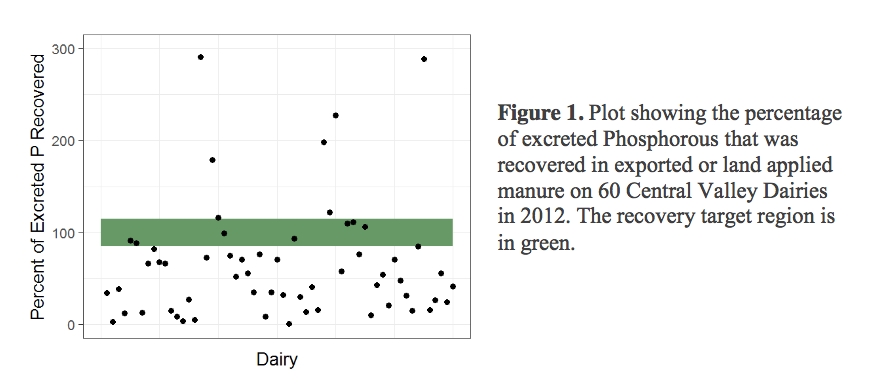
Features
Applications
Dairy
Do Your Annual Report Numbers Make Sense?
May 2, 2017 by Christine Miller Graduate Student & Deanne Meyer UCCE Livestock Waste Management Specialist

May 2, 2017, Tulare, CA – Central Valley dairymen in California prepare an annual report – often enormous – for the Central Valley Regional Water Quality Control Board. Annual reports contain information on nitrogen (N) and phosphorous (P) applications to cropland. If this information is accurate, it can help improve both crop and manure management on the dairy. How do you know if your report is accurate?
Often, the nutrient of primary concern is N. Dairy producers want to ensure that as much manure N as possible is used by crops. Otherwise, crop growth may be stunted and manure N can end up polluting air or water resources. However, it is difficult to tell if N application numbers make sense, because the amount of N lost to the air varies. You can perform a simple check with the manure P numbers in your annual report to see if your manure N numbers are accurate.
You want to check that most of the P excreted by the herd is recovered in managed manure. Because P is not lost to the air, all the excreted P should leave the production area in exported or land-applied manure. Look through your last annual report. First, locate the values that estimate the P excretion in your herd. Compare the P excretion values with the amount of P removed from the production area in liquid or solid manure (applied to cropland or manifested off-site). Expect P in managed manure to be around 100 percent of excreted P because P is stable during manure storage.
This calculation was performed with the numbers in the 2012 annual reports of 60 Central Valley dairies. The results are shown in Figure 1, with the amount of P recovered in exported or land-applied manure presented as a percent of the nutrient excreted. Many dairies did not hit their recovery target for P. In many cases, the recovery percent is far above or below the target. This suggests that some manure – and thus the nutrients it contains – is not being accurately accounted for.
Things to consider if your own calculations for P recovery are far above or below 100 percent:
- Make sure all numbers (herd population and manure data) are entered correctly in the annual report. It is easy to put a decimal point in the wrong place or select the wrong unit.
- Check all your lab reports for results that look different or odd.
- Make sure all manure exports and application events are entered.
- Evaluate how manure samples were collected. A composite of many grab samples will better represent your solid manure and provide more representative data.
- Evaluate your sample preservation methods (that samples are kept cold) and that samples are delivered quickly to the lab.
- Be sure scales and flow meters are properly installed and calibrated to measure the amount of manure applied or sold.
- Identify if there is any stockpiled manure retained at the dairy.
- Keep your agronomist informed of any modifications you identify to improve your P recovery data. This may require that your nutrient budget be modified. Ultimately, good P recovery data is useful to you in accounting for P applications to your crops.